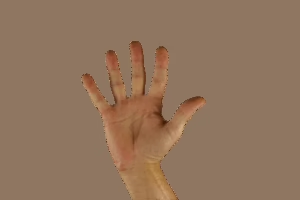Unearthing the Past: A Journey Through the Pages of World History
Introduction
World history is a tapestry woven with the threads of countless civilizations, events, and personas. Each thread, whether vibrant or faded, plays a crucial role in understanding the present and shaping the future. This article aims to delve into the complexities of world history, exploring significant moments, influential figures, and the lessons learned over millennia.
Chapter 1: The Dawn of Civilization
The First Civilizations
The story of human history begins with the emergence of the first civilizations around 3,500 BCE in regions such as Mesopotamia and Ancient Egypt. Mesopotamia, often referred to as the “cradle of civilization,” is where we see the first development of writing, the wheel, and urban planning.
The Mesopotamian Influence
In Mesopotamia, the Sumerians established city-states like Uruk and Ur, introducing monumental architecture and complex societal structures. The invention of cuneiform writing allowed for the documentation of laws and trade, laying the groundwork for future civilizations.
Egypt: The Gift of the Nile
In contrast, Ancient Egypt flourished along the banks of the Nile River. The predictability of the Nile’s floods enabled agriculture to thrive, leading to surplus food production and a complex society. The Pharaohs emerged as both political leaders and divine figures, constructing monumental tombs such as the pyramids of Giza.
Chapter 2: The Age of Empires
Greek and Roman Civilizations
The classical era, characterized by the rise of Greece and Rome, was a pivotal time in human history. The Greeks contributed significantly to art, philosophy, and politics, while the Romans established a vast empire that has influenced governance and law to this day.
The Hellenistic Legacy
After the conquests of Alexander the Great, the Hellenistic period spread Greek culture throughout the Mediterranean and beyond. Thinkers such as Socrates, Plato, and Aristotle laid the foundations of Western philosophy, while advancements in mathematics and science emerged.
The Roman Empire’s Impact
The Roman Empire’s expansion facilitated trade and cultural exchange, uniting diverse peoples under a common legal framework. Innovations in engineering, such as aqueducts and roads, transformed urban landscapes. Ultimately, the fall of the Roman Empire in 476 CE set the stage for the Middle Ages and the rise of feudalism.
Chapter 3: The Medieval Period
A Time of Transformation
The medieval period, often referred to as the “Dark Ages,” was not devoid of progress. Rather, it was a time of transformation where art, culture, and religion evolved significantly.
Feudalism and the Church’s Power
Feudalism emerged as a response to invasions and the breakdown of centralized authority after Rome’s fall. Lords offered protection in exchange for service, creating a hierarchical society. At the same time, the Catholic Church became a powerful institution, influencing politics and culture.
The Crusades and Cultural Exchange
The Crusades, a series of religious wars between Christians and Muslims, were significant for cultural exchange. Although rooted in conflict, they led to increased contact between Europe and the Islamic world, introducing advanced mathematics, science, and philosophy back into Europe.
Chapter 4: The Renaissance and Age of Exploration
Rebirth and Discovery
The Renaissance marked a renewed interest in classical knowledge and the arts. This period of “rebirth,” beginning in the 14th century, catalyzed advancements that shaped modernity.
Cultural Flourishing
Artists like Leonardo da Vinci and Michelangelo revolutionized art, utilizing techniques such as perspective and chiaroscuro to evoke realism. The invention of the printing press by Johannes Gutenberg in the 15th century allowed for the mass production of books, democratizing knowledge.
The Age of Discovery
Simultaneously, the Age of Exploration led to the discovery of new lands. Figures like Christopher Columbus and Vasco da Gama opened new trade routes, resulting in cultural exchanges as well as the tragic consequences of colonization.
Chapter 5: The Age of Revolutions
Ideals and Transformations
The 18th and 19th centuries were characterized by revolutionary ideals that transformed nations. Enlightenment thinkers like John Locke and Jean-Jacques Rousseau inspired movements advocating liberty and equality.
The American Revolution
The American Revolution (1775-1783) was not only a struggle for independence but also a desire to implement Enlightenment ideals. The U.S. Constitution established a framework for democracy, becoming a model for future republics.
The French Revolution
Similarly, the French Revolution (1789) sought to dismantle the oppressive structures of monarchy and establish a republic based on the rights of man. Despite its initial goals, the revolution devolved into chaos, leading to the rise of Napoleon Bonaparte.
Chapter 6: The Industrial Revolution and its Global Impact
The Engine of Change
The Industrial Revolution, beginning in the late 18th century, fundamentally changed societies around the world. Innovations in machinery and manufacturing shifted economies from agrarian to industrial.
Technological Advances
The steam engine, spinning jenny, and power loom facilitated mass production, increasing efficiency. This led to urbanization as people flocked to cities for work, resulting in significant social changes.
Global Consequences
The Industrial Revolution had far-reaching global consequences, including imperialism. Industrialized nations sought new markets and resources, leading to colonization in Asia, Africa, and the Americas.
Chapter 7: The World Wars
Conflict and Aftermath
The 20th century was marked by unprecedented global conflict, with two World Wars that reshaped international relations and societal norms.
World War I
World War I (1914-1918), often called the “Great War,” resulted in significant loss of life and led to political upheaval in Europe. The Treaty of Versailles created conditions that would eventually lead to World War II.
World War II
World War II (1939-1945) was marked by atrocities such as the Holocaust and the use of atomic bombs. The war concluded with the establishment of the United Nations, aiming to prevent future conflicts and foster international cooperation.
Chapter 8: The Cold War Era
Ideological Divisions
The Cold War (1947-1991) saw the U.S. and Soviet Union emerge as superpowers, fostering a climate of geopolitical tension and ideological conflict.
Nuclear Arms Race
The arms race led to the proliferation of nuclear weapons, creating a climate of fear and the concept of mutually assured destruction (MAD). Events like the Cuban Missile Crisis underscored the potential dangers of this tension.
Cultural Impact
Culturally, the Cold War fostered division but also innovation in fields such as space exploration. The Space Race culminated in the Moon landing in 1969, a significant achievement symbolizing technological prowess.
Chapter 9: The Post-Cold War World
A New Era or Continued Struggle?
With the Cold War’s end, the world entered a phase of globalization and rapid technological advancement. However, it has also been marked by persistent conflicts, terrorism, and environmental challenges.
Globalization
Globalization has interconnected economies and cultures, enabling unprecedented levels of communication and trade. The digital revolution has transformed how we access information and interact.
Continuing Divides
Despite advancements, issues such as inequality, climate change, and geopolitical tensions continue to shape global relations. The rise of populism and nationalism in various regions poses challenges to collaborative efforts.
Chapter 10: Reflections and Lessons Learned
Understanding Our Past
As we journey through the pages of world history, several key lessons emerge. The cycle of rise and fall of civilizations reminds us of the fragility of progress. The interconnectedness of our global society underscores the importance of cooperation and understanding.
The Relevance of History
Historical knowledge allows us to learn from past mistakes and successes. Understanding the complexities of our past helps inform present decision-making and fosters a more inclusive future.
Conclusion
Unearthing the past offers a deeper understanding of the present and illuminates paths toward the future. As we reflect on the tapestry of world history, we must recognize our shared humanity and the lessons learned from our ancestors. By doing so, we can navigate the complexities of contemporary life and contribute to a better world.
References
[1] World History Encyclopedia. (2023).[2] Britannica, T. Editors of Encyclopaedia. “Mesopotamia.” Encyclopaedia Britannica, 2023.
[3] National Geographic Society. “Ancient Egypt.” National Geographic, 2023.
[4] BBC History. “The Influence of Ancient Greece.” BBC, 2023.
[5] American History. “The American Revolution.” American History, 2023.
[6] History.com Editors. “The French Revolution.” History Channel, 2023.
[7] Industrial Revolution. (2023).
[8] United Nations. (2023).
Footnotes
[1] The importance of documenting historical events cannot be understated; written records provide a foundation for future generations to learn from past experiences.[2] The complexities inherent in ancient societies illustrate the evolving nature of civilization and governance.
[3] Cultural exchanges during periods of conflict, such as the Crusades, highlight the duality of war and peace in shaping history.
[4] The philosophies that inspired revolutions continue to influence modern political discourse and human rights movements.
[5] Industrialization has not only transformed economies but also has had profound social ramifications.
[6] Understanding the causes and consequences of the World Wars provides essential insight into contemporary international relations.
[7] The Cold War serves as a reminder of the potent combination of ideology and nuclear capability.
[8] The current challenges of globalization call for renewed cooperation and innovative solutions grounded in historical understanding.
This comprehensive article serves as a concise overview of significant historical periods, drawing connections between past events and contemporary issues. Such insights are invaluable for anyone looking to understand our shared history and its implications for the future.


























Add Comment